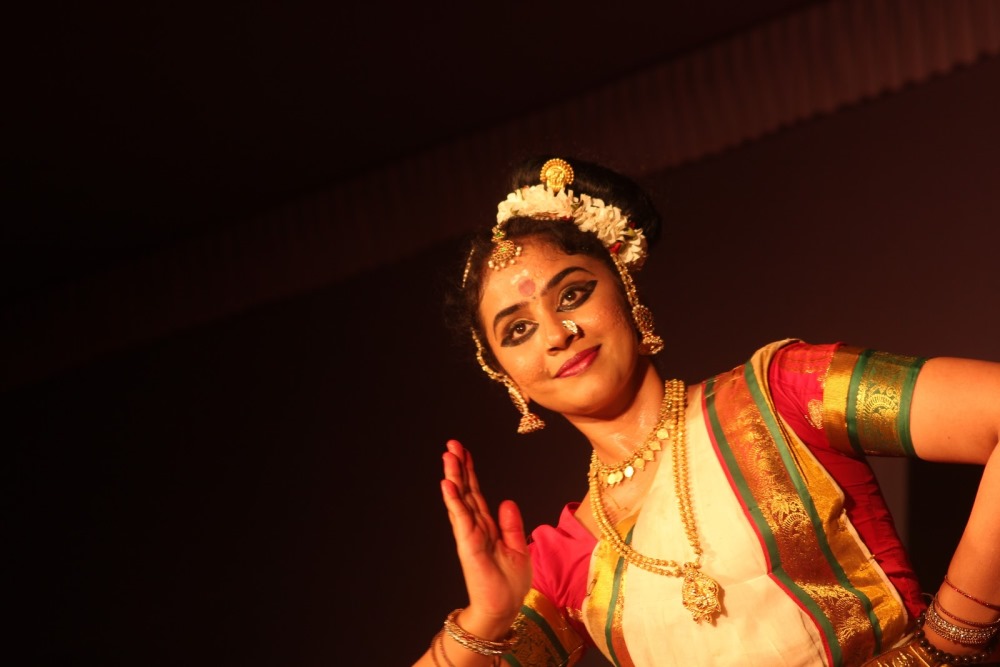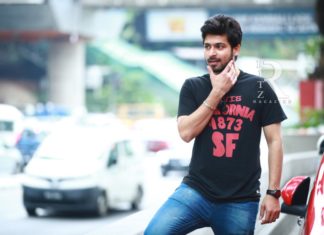Dr.Methil Devika’s dance documentary ‘Sarpatatvam’ is a contender for the Oscars
As you watch her perform, you are mesmerised by her sheer grace and perfection. You feel as if you are transported to another realm, as her tales seem to come alive right in front of your eyes. Her conviction in her art is evident and it comes as no surprise that Sarpatatvam, the dance documentary based on the ancient wisdom of serpents, a fruit of her research, has become a contender for the Oscars. It proves that language and culture cease to be a barrier when it comes to art. For this gifted artiste and scholar, dance has been a companion since the age of four. As a young girl, she mastered the Thanjavur style of Bharatanatyam under Guru Melattur S Natarajan. She went on to pursue a degree in commerce, won a gold medal in MBA and briefly worked in a media house; until she realised that dance was her true calling. She set out to pursue her dream – a doctorate in dance from Kolkata. But that required a post-graduation in dance and once again she completed her masters with a gold medal (this time, in Kuchipudi) and went on to receive her PhD. She stunned dance critics by mastering Mohiniyattam and her signature style of dance has since become one that boldly defies convention and breaks all stereotypes. Her dedication and hard work have won her prestigious accolades like the Ustad Bismillah Khan Yuva Puraskar, the Devadasi National Award and the Kerala Sangeeta Nataka Akademy Award! Ritz gets into a candid chat with the charismatic and super talented Dr.Methil Devika, who is married to renowned Mollywood actor and politician, Mukesh.
Interview: Riya Sonny Datson
Photography courtesy: Google
When did you realise that dance was your calling?
I always knew that dance would be a part of my life. I was not just interested in performance but I wanted to learn the philosophies, science and semiotics involved in the art. I perceived dance as an amalgamation of subjects and was as serious about it as any of my other academic pursuits. My academic interest in dance and the allied subjects were so strong that it reflected in my performance and made it very dynamic. Especially in Mohiniyattam, which involved a lot of self-study, self-appraisal and self-criticism; after a certain age, I was never under the influence of any Guru. Therefore, I was fearless since I was not struggling to fit into a ‘class of artist’. This made my performance bold and gave it, its fair share of viewers.
[wzslider autoplay=”true” lightbox=”true”]
Today, amidst commercialisation and multiple dance forms, how do you guide your students to stay focused?
I don’t guide them, I just let them be. When I started to do Kuchipudi, people told me that ‘if you are a Kuchipudi dancer, then you can’t do Mohiniyattam’ and it never bothered me. I enjoyed the best of both worlds. I believe Indian classical dance has a common code and if you have trained for a long time in a particular form, then you are ready to execute it. The energies are different in different styles, but if you practise it long enough, then you will master it. In fact, I think artists should try different dance forms as you can’t be constrictive with dance. To me, it is as simple as speaking multiple languages.
What was the inspiration behind the making of Sarpatatvam?
There was no inspiration but it was purely intuitive. Just as I started my research, I was called to perform at two temples – the Manarshala and the Nageshwari Pulikkal. It seemed like a sign. What began as intuition came to a fruition.
Sarpatatvam beautifully describes the awakening of the Kundalini and the transcendence through the seven chakras. Do you believe that dance is connected to spirituality?
Of course, Indian classical dance is a spiritual form. But unless you have gone through a process of training and focused thinking, one can’t experience spirituality. Not every performer adapts spirituality into Mohiniyattam. But I feel when you perform, spirituality has to be also experienced by the viewer. Though most of my work is based on bhakthi, emotions around situations and poetry, I do have central pieces that are mystical. There are a lot of underlying currents, which everyone might not understand but I would still want to do it. Such performances are multidimensional and communication is based on the level of spiritual progress of an individual. After a point, I perceive it like a mantra -when you are reciting a mantra, you don’t need them to understand it completely but you say because you feel it creates vibration. Similarly, it is not possible to communicate every part of your dance to the audience. There are dynamics and content that cannot be communicated to every spectator. Their understanding would increase only with repeated viewing or increased awareness. Certain performances are like sutras. I would say that Sarpatatvam had a very small mystical element when compared to my other work.
How does it feel to be accepted globally?
It feels great to be recognised in a massive global forum like the Oscars. It is undoubtedly a result of my research and belief in my work. It was initially meant as a record of preservation of art, philosophies and culture and was never intended for the Oscars. This proves that there is international interest for genuine art. What was most appreciated was the minimalism and the fact that the dancer could create images in the mind solely through minimalism and that the art form was capable of evoking universal emotions. This is a lesson for the classical dancers based in India, especially in Kerala. It is necessary to believe in minimalism, which comes only through a journey of discovery within the self. It is like looking into a mirror. I find Indian art very liberating as it emphasises on equality. The artiste has access to wonderful texts and the art unifies everyone irrespective of gender.
What is your secret to being so composed and calm?
Even as I talk, a lot is happening within and I am constantly thinking of my art – of entering more profound dimensions in art, to perfect it, to present it to the audience. I don’t think am expressively noisy but inside, my mind is restless. For the last six months, I have been working on ‘Srichakra’, a highly mystical piece to be performed at the Madras Music academy and it has been torturous. Creativity has never been enjoyable to me, in fact at times it has been agonising as the images have a deep impact on you.
When it gets difficult, what keeps you going?
The fruit of fulfillment is extremely beautiful. Though the process is extremely tiresome, when the audience experience it without being involved in the process, it is very satisfying and liberating. I feel as an artiste, it is my responsibility to take the audience through these realms. I feel the need to pursue topics that are otherwise taken so lightly.
What has been your biggest challenge?
While dance takes me to a surreal world, reality is anything but surreal. My biggest challenge would be balancing work and family. I may be wrong but I feel I can’t find enough time for my mother and son. I get bogged down by mundane activities of everyday and find it hard to strike a balance.
Being married to an actor and a politician, you are always under the limelight. How do you handle all the controversies?
I am very disconnected from all of that. I am not deterred by any controversies since none of the issues have any kind of reason to back them. If they had a concrete reason, I would definitely be upset.
Biggest learning as an artiste?
I think as artistes, we have to create a new formulae. It is important to understand convention as one needs to learn the rules to break the rules. I never tell my students to follow a specific style. For me, art is so diverse that it is very liberating. My biggest learning is that art and life are deeply connected. I have brought life into art and art into life.
Methil Devika in three words: Elusive, Brave, Patient








 Raashii Khanna
Raashii Khanna










